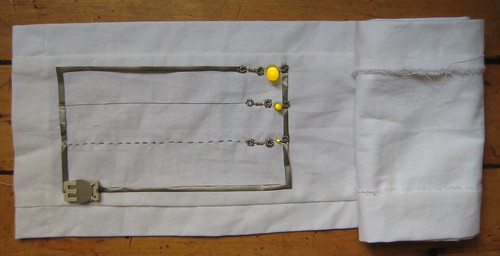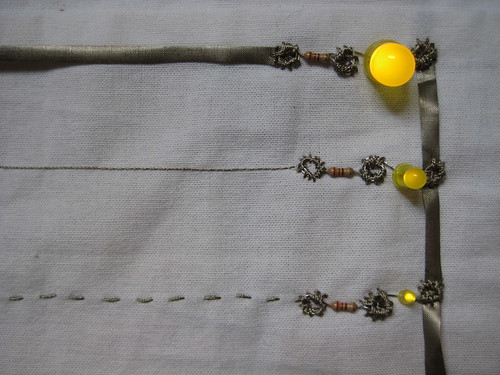Soft Circuit Sampler
By Kate Hartman on August 2008, Day 3, Guest Star
For my project for the day, I created the beginnings of a Soft Circuit Sampler – a conductive textiles version of the traditional needlework sampler. According to Wikipedia:
“The oldest surviving samplers were constructed in the 15th and 16th centuries. As there were no pre-printed patterns available for needleworkers, a stitched model was needed. Whenever a needlewoman saw a new and interesting example of a stitching pattern, she would quickly sew a small sample of it onto a piece of cloth – her ‘sampler’. The patterns were sewn randomly onto the fabric as a reference for future use, and the woman would collect extra stitches and patterns throughout her lifetime.
16th Century English samplers were stitched on a narrow band of fabric 6-9in (15-23cm) wide. As fabric was very expensive, these samplers were totally covered with stitches. These were known as band samplers and valued highly, often being mentioned in wills and passed down through the generations.”

I decided to do an interpretation of the band sampler and have the base cloth for my sampler be a long, narrow form:


Since the idea with the sampler is to collect techniques as you learn them, this is just the beginning of a work in progress. The first example on it compares various soft conductors: ironed-on conductive fabric, as well as machine-sewn and hand-sewn conductive thread.



August 1st, 2008


Leave a Comment
Trackback this post | Subscribe to the comments via RSS Feed